Cats of Istanbul: Under the purrs lie meows of pain

(This is the third of a four-part series on Istanbul. Today: Istanbul’s cats.)
ISTANBUL – Sultanahmet Square still represents the heartbeat of Istanbul. For 400 years it was the center of the Ottoman Empire, the scourge of Western Asia and much of Europe. It is still home to the famed Blue Mosque from where you can see the majestic Aya Sofya mosque at the other end. Alongside is the Hippodrome where Ottomans gathered to watch chariot races.
Today tourists from around the world pour into this zone to discover Turkey’s history and marvel at the architectural beauty around them. Myself? I was more interested in a small food stand off in the corner. A large congregation of cats strolled around, welcoming visitors’ hands stroking their fur and tickling their chins. They were waiting.
Soon a small, middle-aged mustachioed man emerged from a back door. He started peppering the stone pavement with bits of food, maybe spare roasted lamb from the kabobs they were selling. The cats leaped on them like lions on live lambs. They didn’t look starving. They were fat, cuddly cute and seemingly happy.
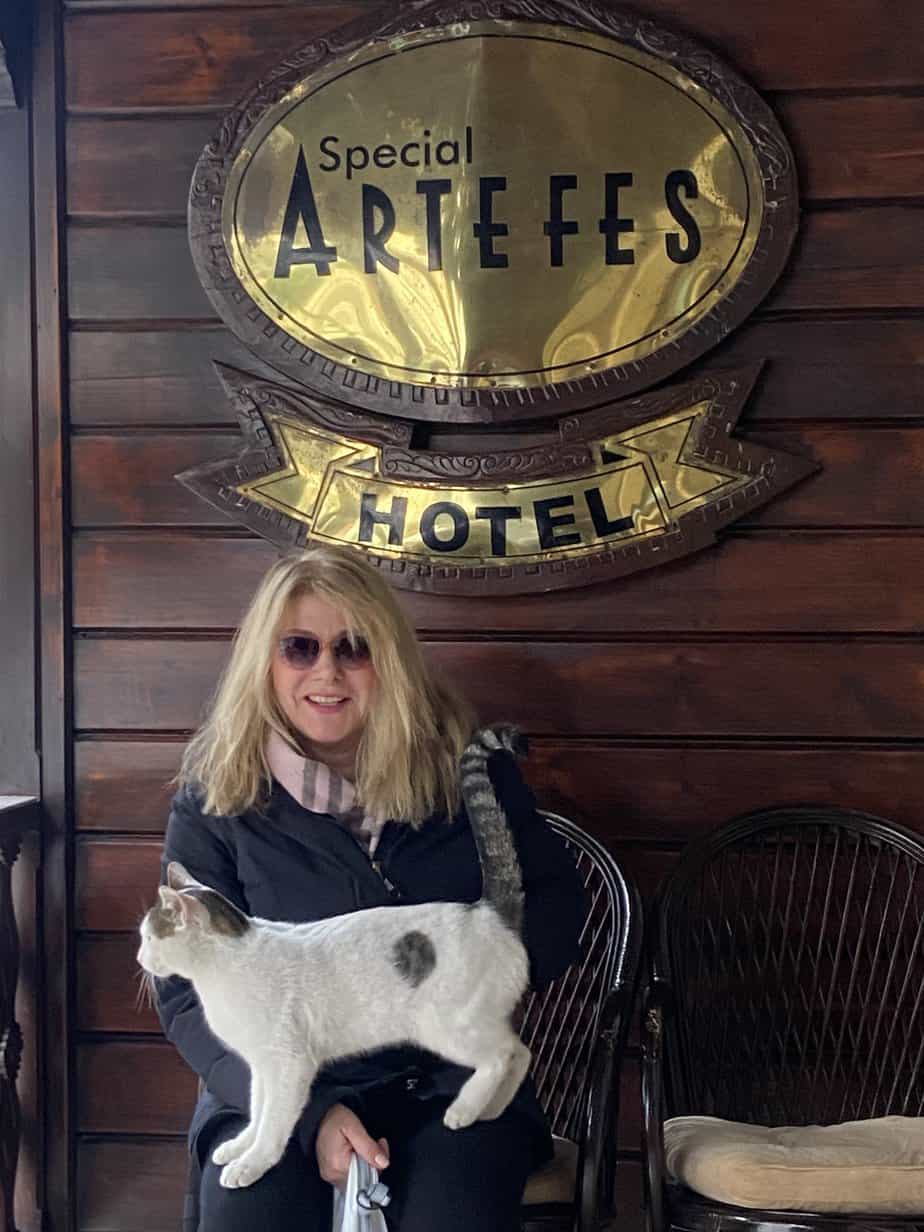
Marina with the stray cat that hangs out at our hotel.
They represent another Istanbul tourist attraction. Istanbul’s cats have gained a reputation as a phenomenon unto themselves. You find healthy strays all over the streets. Usually not far away are food and water dishes and little cat houses built by the city and cat-loving Turks. During our four-day stay late last month, we had one hang out on our hotel porch which the staff had adopted as its own.
Cats of Istanbul hype
I read about cats in classrooms, trams, mosques and subways. A documentary about Istanbul’s cats, “Kedi,” has grossed $5 million. The Hagia Sofya Cats Instagram account has 119,000 followers.
But just as Istanbul’s sparkling architecture hides the country’s failing economy, the approachable strays don’t reveal the tragedy behind them. It’s estimated that Istanbul has 125,000 homeless cats on the streets.
Not all of them are eating lamb.
“Unfortunately, there are a lot of wicked bastards. The homeless animal situation is completely out of control.”

Speaking is Hilary Sable, an Englishwoman who moved to Istanbul 18 years ago and has taken up the role as whistleblower of the cats’ plight and caregiving to the needy. Her Cihangir Cool for Cats network, dedicated to helping cats and other homeless animals, started in 2011 and has 10,000 members.
With a quick wit and salty language, she laments the Istanbul cats’ lovable reputation. She rips off the veneer like a film critic revealing a popular starlet as the witch that she really is. Hilary’s big beef is with “Kedi,” the 2016 film that followed the lives of seven street cats, happy, healthy cats being treated by locals like their own children.
“It’s a happy, clappy, postcard bullshit,” Hilary said.

Cats’ history in Islam
Keep in mind, part of the public’s fascination with Istanbul’s cats – and how the city’s treatment of them is often contradictory – is the history. Cats are considered revered in Islam. Fastidious in their grooming, Muslims admire cats for their cleanliness.
It’s said the prophet Muhammad fell in love with cats when one saved him from a snake. He then prohibited the persecution and killing of cats. In fact, he declared a woman to be sent to Hell after she tied up an annoying cat until it died. Muhammad once cut off his sleeve when he had to rise for prayer so he didn’t wake the cat sleeping on his robe.
Throughout history, cats in Muslim countries would defend cities from rat-borne plagues. Houses in these countries were mostly made of wood which attracted rats and mice seeking shelter. Cats controlled the vermin population and became valuable as a free labor source.

In Islam, the saying went, if you killed a cat, you had to build a mosque to be forgiven by God.
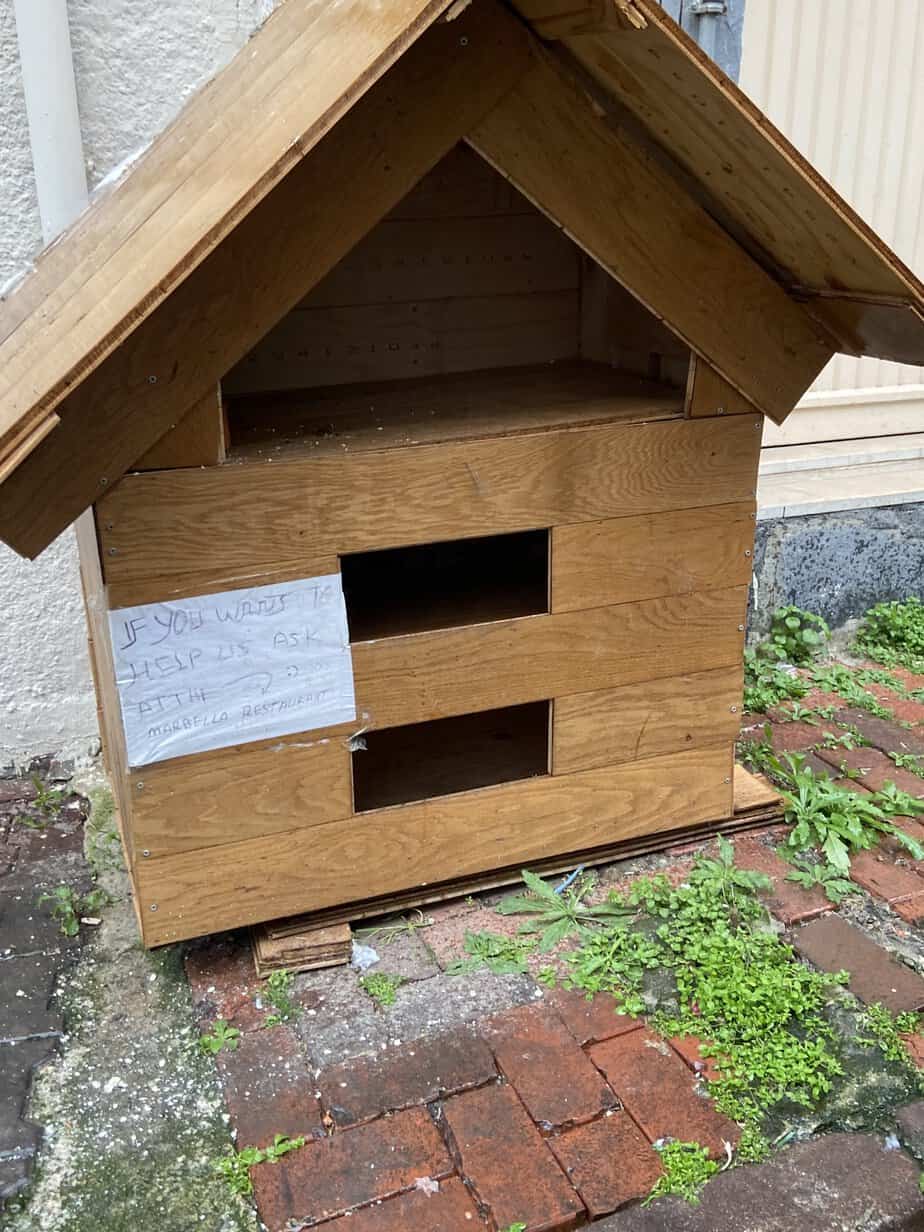
In modern Istanbul, the city built little houses for cats to use as shelters. They’re the red and green ones you see around town. Volunteers built others made of basic wood such as the one near our hotel with the sign reading, in English, “If you want to help us, ask at the Marbella Restaurant” across the street.
Until recentlhy, the city had vending machines in parts of the city where people can get food for cats and dogs in the area.
In 2019 the country deported a Japanese man for killing and eating five stray cats in the Istanbul suburb of Kucukcekmece. Two years ago the government gave cats “living being” status and established prison sentences of six months to four years for crimes against animals. Law mandates all stray animals must be sterilized.
Sounds good, doesn’t it? Is Istanbul cat heaven or what? According to Hilary Sable, Istanbul is one circle of cat hell without the kitty litter. She said “thousands and thousands” have died around Istanbul.
“There’s no actual kill shelters,” she said. “They just let them die of horrific neglect in their own shit.”
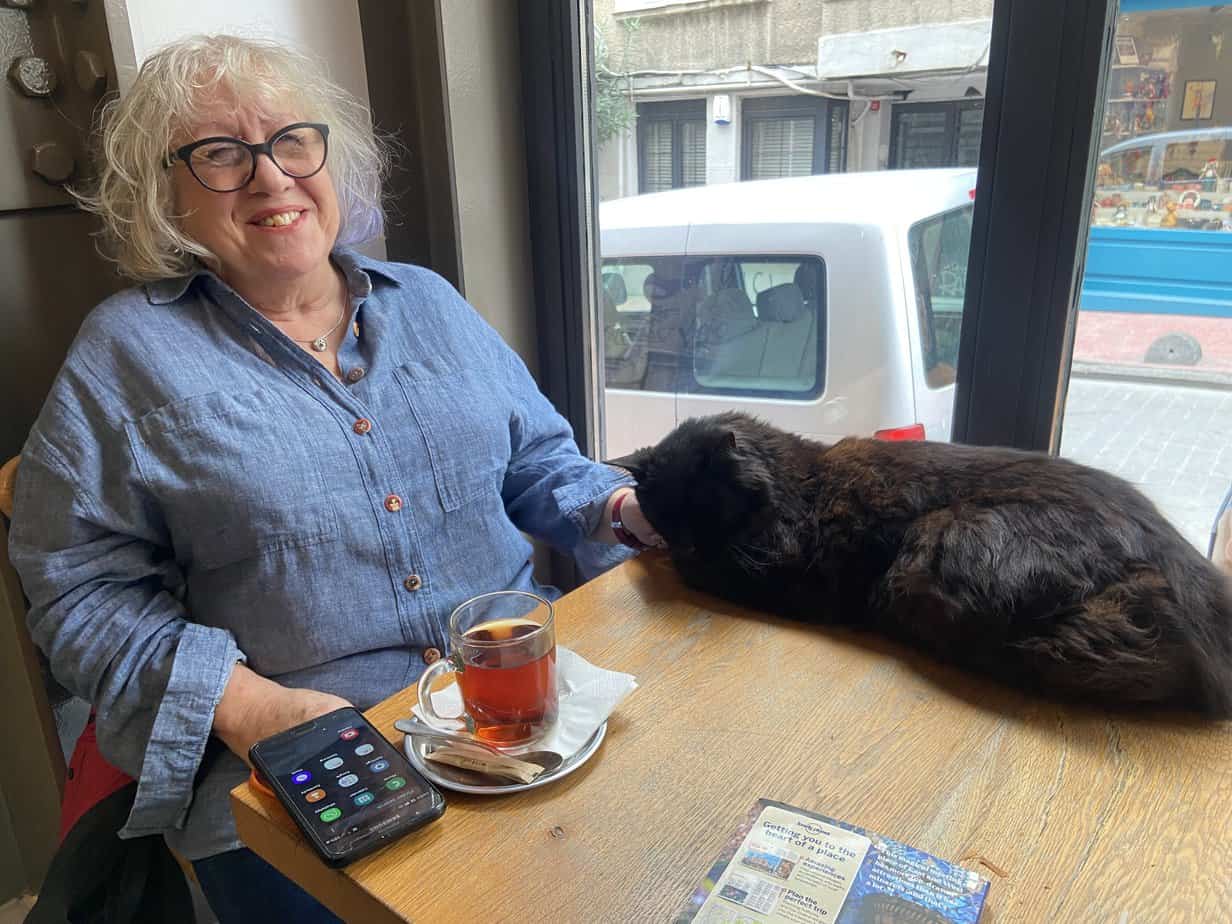
Hilary Sable on the attack
We talked at the cafe, 1 Kahve, on a corner with two other hip coffee shops in the upscale neighborhood of Cihangir. One cafe sported an outdoor mural of a mean-looking cat in clothes reaching out a human hand as if seeking an eye to scratch out.
Hilary Sable can relate. She’s been on the attack for many years. Yet she is Istanbul’s Sisyphus, the man Zeus condemned to the underworld and forced to push a boulder up a hill for eternity. Each time Sisyphus nears the top, the boulder rolls back down.
Every night Hilary feeds out of her own pocket about 50 cats. That doesn’t include five of her own, or Mendy, a black tabby who nestled under Hilary’s petting hand on our table.
“The problem here is there’s no culture for spaying and neutering,” she said. “That’s the first thing. The government brought in a law in the early 2000s giving municipalities responsibilities of spaying and neutering and giving rabies shots but over time these facilities do absolutely nothing. They get a tiny, tiny budget to be fair.”
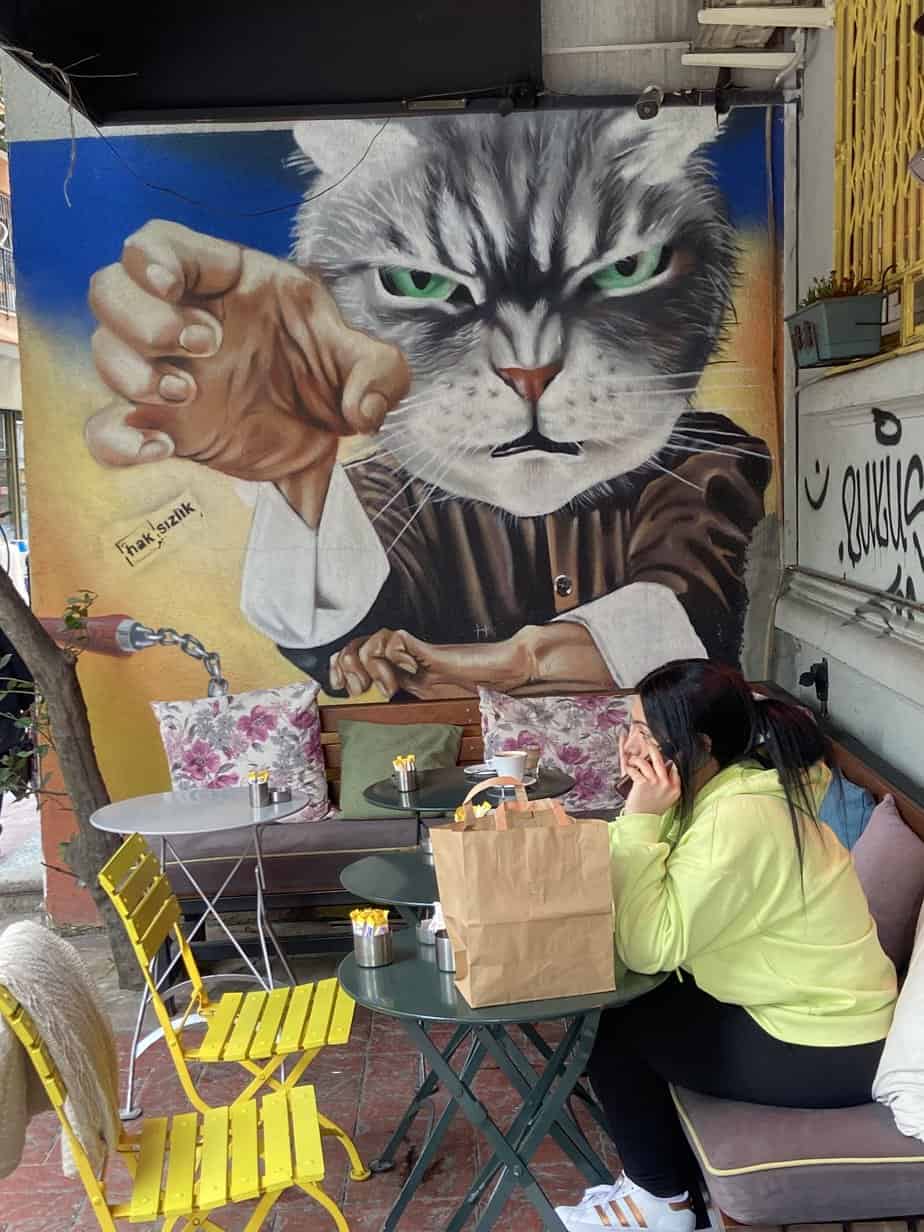
She says her group gives antibiotics, paper towels and other supplies the municipalities don’t have but she says, “they’re not even reactive anymore. They don’t give a shit.”
Another problem is for every group of Turks who feed and house and pet cats on the street, there are a few who treat them like an old shoe they no longer want. They abandon them on the street or dump them in Macka Park, Istanbul’s famous “cat park” which has just as many abused cats as fat, happy cats we saw in Sultanahmet Park.
In February, paper collectors found six dead cats in a garbage container not far from where we spoke near the old Cihangir cat park. The municipality closed the cat park three years ago because they said they had no one to operate it. Last month police launched an investigation after 34 cats were found dead and others missing from homes in the Fenerbahce neighborhood.
Hilary sent me photos of abused cats too horrific for this blog. Marina, my photographer-girlfriend, was so horrified by the stories I relayed to her she couldn’t bring herself to join me and hear Hilary’s details.
Mendy is a prime example. Hilary found him three years ago abandoned in Nisantasi, an expensive, built-up area. She rescued him and let him live in her garden until he decided he preferred the street.
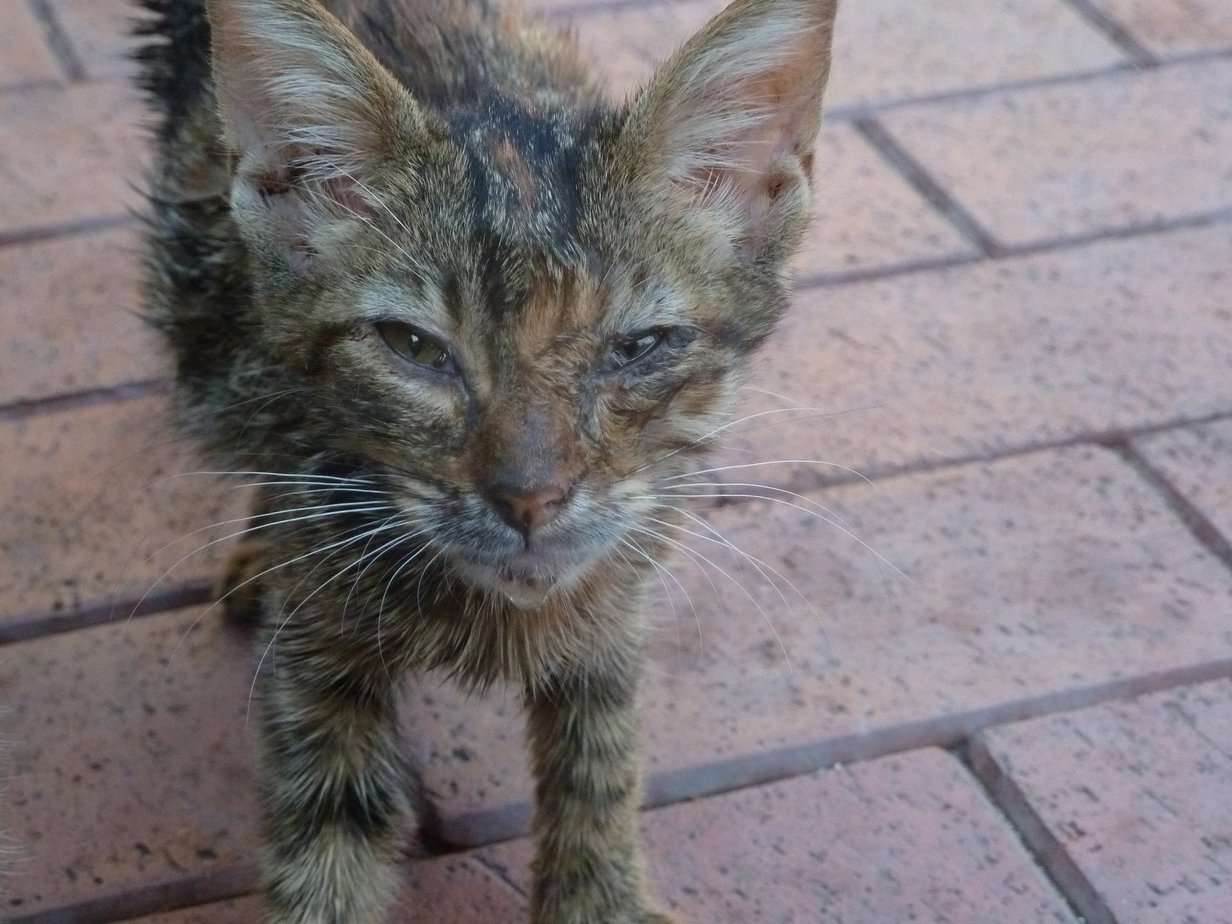
“He was beside himself,” she said. “Physically he was in bad shape but emotionally? He was an absolute mess. He was clinging to us.”
Hilary goes to schools and educates children about how to treat animals and improve their lives. Unfortunately, government officials haven’t learned.
“They won’t take responsibility,” she said. “There was one that happened about six weeks ago. They caught the guy on camera beating a dog to death in the shelter with a shovel. He was arrested and then released.”
With few shelters neutering and spaying, Hilary takes cats to her own vet. The problem is Turkey’s collapsing economy has even affected the cats. She said before the crisis hit around 2020, she paid 79 lira (at the time about €12.50) for a 15-kilogram (33 pounds) bag of food. Today she pays 538 (about €27).
She could neuter a cat for 375 lira (about €60) and spay for 620 (€97). Today it’s 4,000-5,000 (€200-€300) and 6,000-7,000 (€300-€350), respectively. That’s not the only problem.
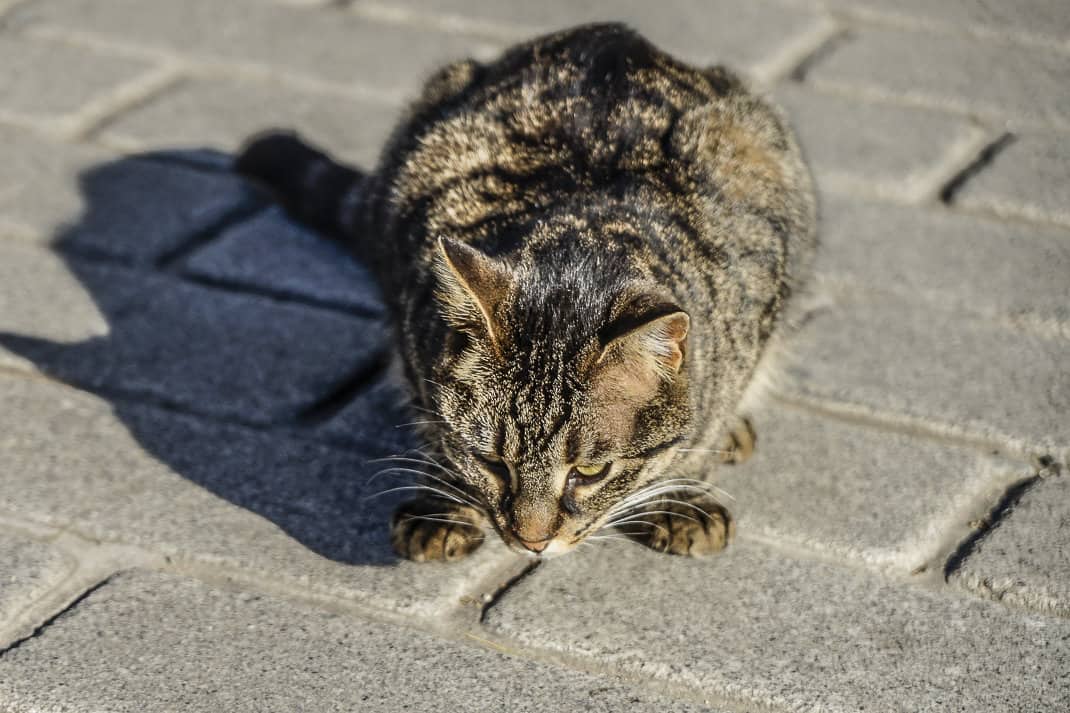
“Imagine the situation. You just caught a feral cat who has been a breeding machine in the area,” she says. “And they tell you, ‘No, you can’t bring it in today. We might let you bring it in Tuesday at 11:37.’ And you know they’re just sitting there drinking tea with their feet up.”
She takes them to her own vet who cuts her a rate as many vets do.
A veteran vet’s take
Gizem Taktak has been a vet in Istanbul for 15 years. She works on the wealthier Asian side of the city. If her regular clients bring in a street cat, she charges 50 percent less for spaying, neutering and even dental surgery.
“But of course it’s not enough,” Gizem said in a phone interview. “There are too many cats. Sometimes conditions aren’t so proper because of limited resources.
“They don’t have many vets. They’re finishing their jobs at 5 or 4. So they have limited time, limited resources and don’t have so much money to buy some, for example, antibiotics and anesthesia drugs.”
She said she’s seen cases of people annoyed with all the street cats and eliminating them with poison. However, she has also seen the good side of locals. So did we. Turks would drop their shopping bags to pet a cat that looked lonely.
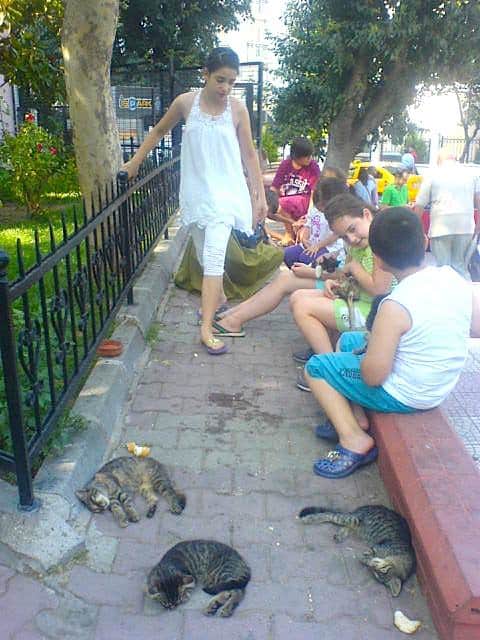
Seven years ago Marina and I saved a dying kitten on the Greek island of Skopelos. He had a badly infected leg and we named him Bolt in hopes that he’d somehow run like the Jamaican champion someday. He never did but today he’s alive and happy on a beautiful island in the Aegean.
We saw no cat suffering like Bolt in Istanbul.
“Some people don’t like them. I get this,” Gizem said. “Still, there’s a huge population of people who care and are doing a lot of great stuff. They volunteer. For the Turkish people, they are cat lovers. When they see a cat making a meow meow in front of their house or their store, they are feeding them.”
I reached out to officials at Sisli, one of the more cat-friendly municipalities, on Hilary’s side of Istanbul. They didn’t return email requests for an interview.
I asked Hilary what keeps her going. She originally came to Istanbul to make art glass. She’s now retired and teaches some English. But cats are her passion and her heartbreak. In response to my question, she told me the story about the starfish. A woman walks along the beach where thousands of starfish have washed ashore. Sometimes she’ll throw one back into the sea. A man approaches and says, “What’s the point? There are thousands of them. You’re not going to save them all.”
She bends over, picks up another and throws it in the sea then says, “I saved that one.”
“It’s that kind of thing that keeps us going,” Hilary said before petting Mendy, looking at him fondly and adding, “Well, I saved that one.”
If anyone wants to help the cats of Istanbul, they can contact Hilary or donate via PayPal at Cihangircoolforcats@rocketmail.com.
(Next week: The Pudding Shop, the backpacker hangout “Midnight Express” made famous.)


April 21, 2023 @ 9:22 am
I know Hilary personally and like all her friends am awed by her passion, dedication & efficiency. It’s all true- some people love ‘em, some people hate ‘em, some ignore ‘em- but there are just too many cats. All of us take in, spay & neuter what we can but there are just too many, and the ones we can’t help haunt us.
April 23, 2023 @ 12:43 pm
Thanks for the note, Trici. It must be terribly frustrating to help but not help them all. But at least you do what you can. If there is heaven, Hilary and you will be there. Hopefully, it’s cat heaven.
June 19, 2023 @ 8:29 pm
Hi! Can you tell me the best/cheapest place to get a kitten eye drops? And can I take a kitten to London? or Scotland? I would like to help but don’t know how? Also I would like to get 1-2 cats fixed for my friends…thoughts? Thank you – Joy
October 5, 2023 @ 5:50 am
When I was in Istanbul, seeing all those upturned tins of cat food on the sidewalks made me wonder about the rat and cockroach problem that must surely be an escalating nightmare
October 22, 2023 @ 9:03 am
With so many cats, I doubt rats are a problem in Istanbul.